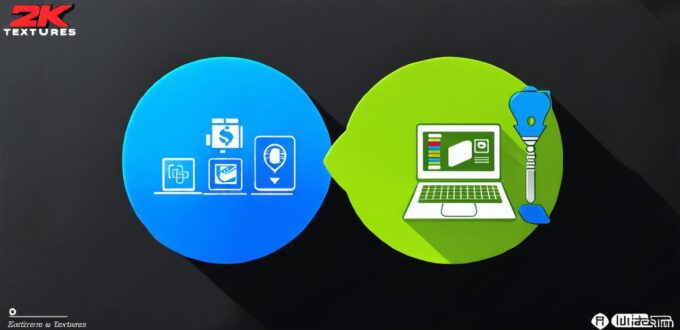When it comes to software development, there are two main types of applications: platforms and software. While these terms may seem similar at first glance, they actually have some key differences that can help developers understand how their applications work and what sets them apart from one another. In this article, we’ll explore the differences between platforms and software, using case studies and real-life examples to illustrate the points being made.
What is a Platform?
A platform is an application or system that provides a framework for other applications to run on top of. It acts as a middleman between the user and the underlying software, allowing developers to create new applications without having to build everything from scratch. Examples of platforms include operating systems like Windows, macOS, and Linux, as well as web browsers like Google Chrome and Mozilla Firefox.
What is Software?
Software, on the other hand, is an application that performs specific tasks or functions. It can be standalone or integrated with other applications, and it’s designed to perform a particular job for users. Examples of software include Microsoft Word, Adobe Photoshop, and Slack.
The Differences Between Platforms and Software
While platforms and software both have some similarities, there are several key differences between them that can help developers understand how they work and what sets them apart. Here are a few of the most important differences:
1. Functionality
One of the main differences between platforms and software is their level of functionality. Platforms are designed to provide a framework for other applications to run on top of, while software is designed to perform specific tasks or functions for users.
2. Development requirements
Another key difference between platforms and software is the development requirements. Developing a platform typically requires a deep understanding of programming languages and operating systems, as well as experience with building user interfaces and other important features. In contrast, developing software generally requires a more focused set of skills, such as knowledge of specific programming languages or expertise in a particular area like graphic design.
3. User experience
The user experience is another key difference between platforms and software. Platforms are designed to be highly customizable, allowing users to tailor the interface to their needs and preferences. In contrast, software is generally more standardized, with a limited set of features and functions that are designed to work together seamlessly.
4. Maintenance and updates
Finally, maintenance and updates are another key difference between platforms and software. Platforms like Windows and macOS are updated regularly to fix bugs, add new features, and improve performance. In contrast, software applications like Microsoft Word and Adobe Photoshop are generally updated less frequently, and may require users to upgrade to a new version if they want access to the latest features.
Case Studies: Understanding the Differences Between Platforms and Software
To help illustrate the differences between platforms and software, let’s look at a few real-life examples of how these two types of applications work. Here are a few case studies that demonstrate the key differences between platforms and software:
1. Creating a mobile app

When creating a mobile app, developers typically use a platform like Android or iOS to build their app. These platforms provide a framework for developers to create their app, including access to a variety of tools and libraries that can be used to build the app’s user interface, add features like cameras and GPS, and more.
2. Developing a desktop application
On the other hand, when developing a desktop application, developers might use a platform like Windows or macOS to build their app. These platforms provide a similar set of tools and libraries that can be used to create the app’s user interface and add features like database access or network communication.
3. Building a web application
Web applications are another type of software that can be built using platforms like WordPress or Drupal. These platforms provide a framework for building websites and web applications, including access to a variety of tools and libraries for adding features like content management systems, e-commerce functionality, and more.
Conclusion: Understanding the Differences Between Platforms and Software
In conclusion, platforms and software are two different types of applications that serve distinct purposes. Platforms provide a framework for other applications to run on top of, while software performs specific tasks or functions for users. By understanding these key differences, developers can choose the right platform or software for their needs, and create more effective and efficient applications.
Whether you’re building a mobile app, a desktop application, or a web application, there are always new platforms and software available that can help you create more powerful and feature-rich applications. As technology continues to evolve, it’s important for developers to stay up-to-date with the latest trends and tools in order to build the best possible applications.
